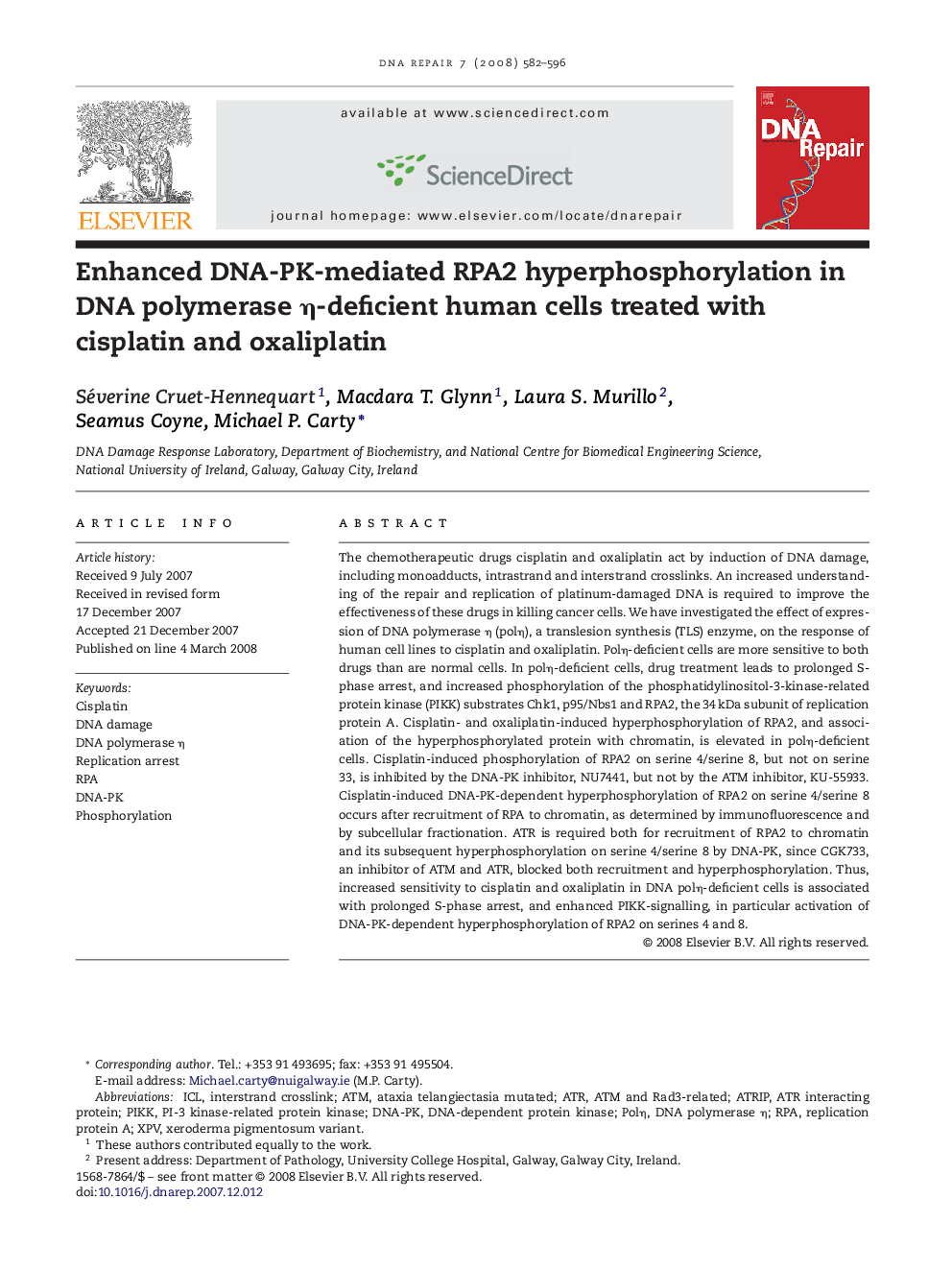| Article ID | Journal | Published Year | Pages | File Type |
|---|---|---|---|---|
| 1980896 | DNA Repair | 2008 | 15 Pages |
Abstract
The chemotherapeutic drugs cisplatin and oxaliplatin act by induction of DNA damage, including monoadducts, intrastrand and interstrand crosslinks. An increased understanding of the repair and replication of platinum-damaged DNA is required to improve the effectiveness of these drugs in killing cancer cells. We have investigated the effect of expression of DNA polymerase η (polη), a translesion synthesis (TLS) enzyme, on the response of human cell lines to cisplatin and oxaliplatin. Polη-deficient cells are more sensitive to both drugs than are normal cells. In polη-deficient cells, drug treatment leads to prolonged S-phase arrest, and increased phosphorylation of the phosphatidylinositol-3-kinase-related protein kinase (PIKK) substrates Chk1, p95/Nbs1 and RPA2, the 34 kDa subunit of replication protein A. Cisplatin- and oxaliplatin-induced hyperphosphorylation of RPA2, and association of the hyperphosphorylated protein with chromatin, is elevated in polη-deficient cells. Cisplatin-induced phosphorylation of RPA2 on serine 4/serine 8, but not on serine 33, is inhibited by the DNA-PK inhibitor, NU7441, but not by the ATM inhibitor, KU-55933. Cisplatin-induced DNA-PK-dependent hyperphosphorylation of RPA2 on serine 4/serine 8 occurs after recruitment of RPA to chromatin, as determined by immunofluorescence and by subcellular fractionation. ATR is required both for recruitment of RPA2 to chromatin and its subsequent hyperphosphorylation on serine 4/serine 8 by DNA-PK, since CGK733, an inhibitor of ATM and ATR, blocked both recruitment and hyperphosphorylation. Thus, increased sensitivity to cisplatin and oxaliplatin in DNA polη-deficient cells is associated with prolonged S-phase arrest, and enhanced PIKK-signalling, in particular activation of DNA-PK-dependent hyperphosphorylation of RPA2 on serines 4 and 8.
Keywords
Related Topics
Life Sciences
Biochemistry, Genetics and Molecular Biology
Biochemistry
Authors
Séverine Cruet-Hennequart, Macdara T. Glynn, Laura S. Murillo, Seamus Coyne, Michael P. Carty,
